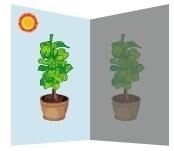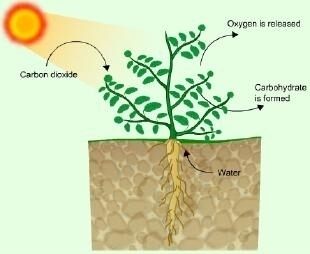Sponsor Area
Nutrition in Plants
Why do organisms need to take food?
All living organisms require food to survive. It gives them energy to perform various activities. All activities such as playing, running, walking, studying, etc. require energy. The various components present in our food such as carbohydrates, proteins, fats, vitamins, and minerals provide energy to our body. These are also important for growth and development of the body.
Distinguish between a parasite and a saprotroph.
|
Parasite |
Saprotroph |
|
The organism that grows on the body of another organism and derives nutrients from it is known as a parasite. |
The organism that obtains nutrients from the dead or decaying organic matter is called saprotroph. |
|
Examples of parasites are Cuscuta and orchids. |
Examples of saprotrophs are fungi and some bacteria. |
How would you test the presence of starch in leaves?
Experiment to test the presence of starch in leaves:
Take two healthy green potted plants of the same type. Keep one potted plant in a dark room for one or two days in order to remove all the starch from the leaves. Keep the other plant in sunlight. Now, take one leaf from each potted plant and put a few drops of iodine solution on them. Then note down the observation.

Plants kept in light and dark conditions
No blue black colour will be observed on the leaves of the plant kept in the dark room. This indicates the absence of starch. Blue black colour will be observed on the leaves of the plant kept in sunlight. This indicates the presence of starch.
Give a brief description of the process of synthesis of food in green plants.
Photosynthesis is defined as the process in which the chlorophyll-containing plant cells synthesise food in the form of carbohydrates, using carbon dioxide and water in the presence of solar energy.

Photosynthesis
Sources of raw materials required for photosynthesis:
(a) Water is taken in from the roots of the plant and is transported to the leaves.
(b) Carbon dioxide from the air enters the leaves through the tiny pores called stomata and diffuses to the cells containing chlorophyll.
(c) Solar energy is used to break water into hydrogen and oxygen. This hydrogen is combined with carbon dioxide to form food for the plants, which is ultimately used by the animals as well.
Thus, photosynthesis can be represented by the following equation.
![]()
Sponsor Area
Mock Test Series
Mock Test Series





